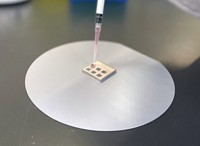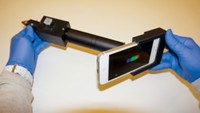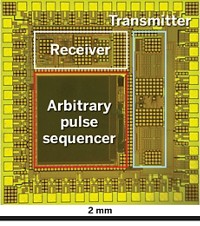Advertisement
Grab your lab coat. Let's get started
Welcome!
Welcome!
Create an account below to get 6 C&EN articles per month, receive newsletters and more - all free.
It seems this is your first time logging in online. Please enter the following information to continue.
As an ACS member you automatically get access to this site. All we need is few more details to create your reading experience.
Not you? Sign in with a different account.
Not you? Sign in with a different account.
ERROR 1
ERROR 1
ERROR 2
ERROR 2
ERROR 2
ERROR 2
ERROR 2
Password and Confirm password must match.
If you have an ACS member number, please enter it here so we can link this account to your membership. (optional)
ERROR 2
ACS values your privacy. By submitting your information, you are gaining access to C&EN and subscribing to our weekly newsletter. We use the information you provide to make your reading experience better, and we will never sell your data to third party members.
Analytical Chemistry
Enabling NMR In The Field
Spectroscopy: Researchers couple portable NMR with capillary electrophoresis
by Sarah Webb
January 21, 2011
Although nuclear magnetic resonance spectroscopy is a powerful, non-destructive tool for identifying chemical structures, the analytical technique isn't mobile: It typically requires large, expensive instruments. Now researchers at Lawrence Livermore National Laboratory have coupled a chemical separation method with a portable NMR device to produce a system that could allow scientists someday to use NMR spectroscopy in the field (Anal. Chem. DOI: 10.1021/ac102389b).
In the past five years, researchers have started developing small NMR instruments that collect data on chemical structures. To build these smaller, cheaper devices, scientists have relied on portable high-field magnets to produce uniform magnetic fields and on miniaturized versions of the radio-wave receivers called microcoils. Julie Herberg of Livermore and her colleagues recently developed a laser lithography technique to mass produce these microcoils (J. Magn. Reson. DOI: 10.1016/j.jmr.2007.08.011 and DOI: 10.1016/j.jmr.2009.06.003).
But shrinking the receiver coil also narrows the instrument's sample bore, making it more difficult to position a sample within it, Herberg says. She and her colleagues knew that previous studies with larger NMR spectrometers had used capillary electrophoresis, a chemical separation method, to purify and deliver sample. They also knew that the method could inject small amounts of a sample into their portable NMR instrument. The method presented an additional benefit: Because NMR signal quality increases with a compound's concentration, capillary electrophoresis would allow the researchers to purify and concentrate individual chemicals from a mixed sample collected in the field.
The scientists coupled a commercially available capillary electrophoresis system with a portable NMR system that they had built with their microcoil. The NMR instrument is about the size of a briefcase and weighs approximately 25 lb, Herberg says. Then, as a proof of concept, they showed that using 19F NMR spectroscopy with their system, they could identify the individual compounds in a sample that contained trifluoroacetic acid and perfluoropentanoic acid.
Herberg and her colleagues eventually want to produce a system tailored to on-the-go identification of toxic substances or environmental contaminants. Several companies are also developing portable NMR systems, she says, particularly for applications with biological samples.
Jonathan Sweedler of the University of Illinois, Urbana-Champaign, says the study signifies a conceptual shift in how researchers use NMR spectroscopy. Although it's less sensitive than larger systems, this NMR setup could move the technique from one only accessible through shared, high-cost facilities to something accessible to individual researchers, he says. Overall, Sweedler says, the system is "a nice demonstration" of that concept.





Join the conversation
Contact the reporter
Submit a Letter to the Editor for publication
Engage with us on Twitter